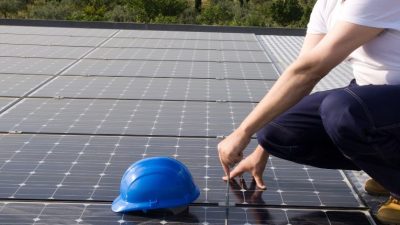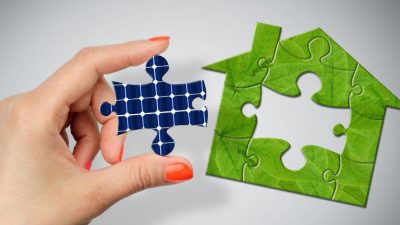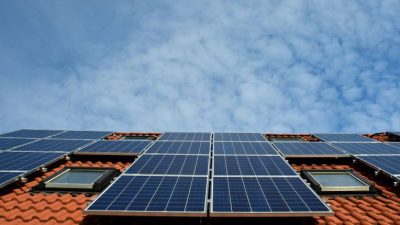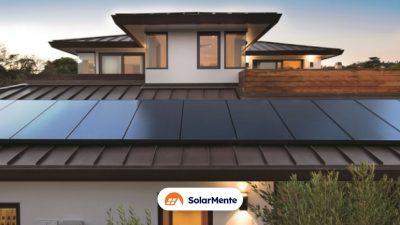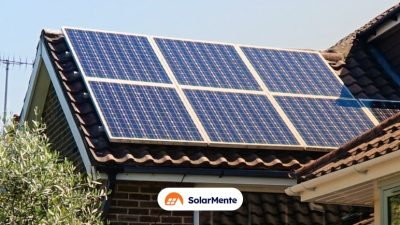If you are considering installing solar panels on your home, have asked for several quotes and are overwhelmed by the technical concepts, you may have the following question:
Is it better to connect solar panels or in parallel?
The choice of one connection or the other has a direct implication on the performance of your photovoltaic installation.
That is why in this post we are going to explain the difference between the two types of connections and which is convenient in each case.
Let’s get down to business!
What are the differences between solar panels in series or parallel?
The type of connection has an impact on the performance of the system, but also on the solar inverter used.
In reality, the aim is to achieve a wiring that provides:
Higher financial savings every month
A return on investment in the short term
To achieve this, it is important to know how to connect the solar panels. The installer must provide a balance between the volts and amps of the installation in order to achieve a correct operation of the system.
There are three options or ways to make the connection:
Panels in series
Panels in parallel
Mixed connection
Before explaining each connection in detail, let’s see how it works with a simple everyday example.
Specifically, the way it used to work for Christmas lights.
Years ago, when a bulb burnt out or broke, the whole string of lights stopped working as they were connected in series. Therefore, the damaged part had to be found, repaired and put back into operation.
Today, however, it is different.
The lights are wired in parallel so that even if one fails, the rest still work.
The same is true for the production of solar panels.
Panels in series
Connecting the panels in series means that they are connected directly to each other in a kind of string.
The positive pole of the first panel is connected to the negative pole of the next module and the process is repeated with the following modules.
In this way, the voltage is built up, creating a series circuit.
It is important to know the voltage value. This information is available on the product data sheet.
Multiplying this value by the number of panels to be installed should be equal to the maximum value allowed by the inverter.
Why is this important?
To avoid damaging the installation.
This type of connection is often used in homes that need to increase the voltage. As a general rule, they are large in size.
Let’s do a small exercise to understand it better.
Imagine the following installation:
4 solar panels
250 W of power
9 Ampere current
30 Volts maximum voltage
We would have an installation of 120 V maximum voltage. We have multiplied the number of panels by the voltage.
It is common to make these connections in solar panels with a power of more than 200W.
In short:
The panels in series are connected to each other, so a failure in one will have repercussions on the rest of the installed modules.
The voltage of all the panels is added together and the amperes remain constant.
Parallel panels
How does paralleling work?
Well.
The positive poles are connected on one side and the negative poles on the other.
In other words, the solar panels are not connected to each other to a central cable, but we are talking about a parallel circuit.
This means that:
The voltage of the panels does not change.
The power can be increased with the same voltage.
The current, i.e. the amperes, of the panels are added together.
The advantage of this type of installation is that the modules work independently of each other, so that a defect in one module will not affect the output of the other modules.
This connection is common in small installations and requires that the panels are the same, or at least as similar as possible to maximise the performance of the system.
As with the series connection, the maximum wattage (W) of the solar inverter must not be exceeded. Neither should the maximum current that the inverter can handle.
Mixed connection: series and parallel solar panels
When is it advisable to use a mixed connection?
Please note.
This solution is used when we want to increase both the voltage and the current of the system.
On the one hand, it allows to maintain a moderate voltage and, on the other hand, to increase the intensity or current of the complete installation.
To make it clearer.
This means that we increase the amount of energy between the panels.
Let’s look at another example.
We have an installation with:
4 solar panels of 200 W
6 amps (current)
20 maximum voltage
With this connection, we would make two panels in series and two in parallel, that is to say, we make two groups.
And this would be the result:
2 panels in series = 2 x 20 V = 40 V
2 panels in parallel = 2 x 6A = 12 A
What happens if shadows are lurking on the PV system?
But what happens if shadows are a common element in our house?
Let’s see.
If you cannot avoid shadows in your house and you install a series connection, when a panel is affected by this obstacle, the production of the remaining modules will decrease to the same power as the affected panel,
In short, we are talking about energy losses in the system that reduce the profitability of the installation.
How can we solve this?
By using microinverters. These devices are connected to each panel, so that they produce energy independently.
If one panel fails, don’t worry. It does not affect the rest of the installation.
Is it better to connect solar panels in series or in parallel?
After all this explanation, is it better to connect panels in series or parallel?
The truth is that once again, the answer is it depends.
It depends on factors such as:
Dimension of the photovoltaic installation
Characteristics of the solar modules
Inverter output voltage (if it is a large system)
Voltage of the batteries (if it is an isolated system).
It is important to consider these points so that the performance of the installation is not affected.
If you want to know how many panels you need for your home and what is the right connection:
Start with our self-consumption calculator.
We will analyse your particular case and make you a proposal adapted to your energy needs.
We look forward to seeing you inside!







